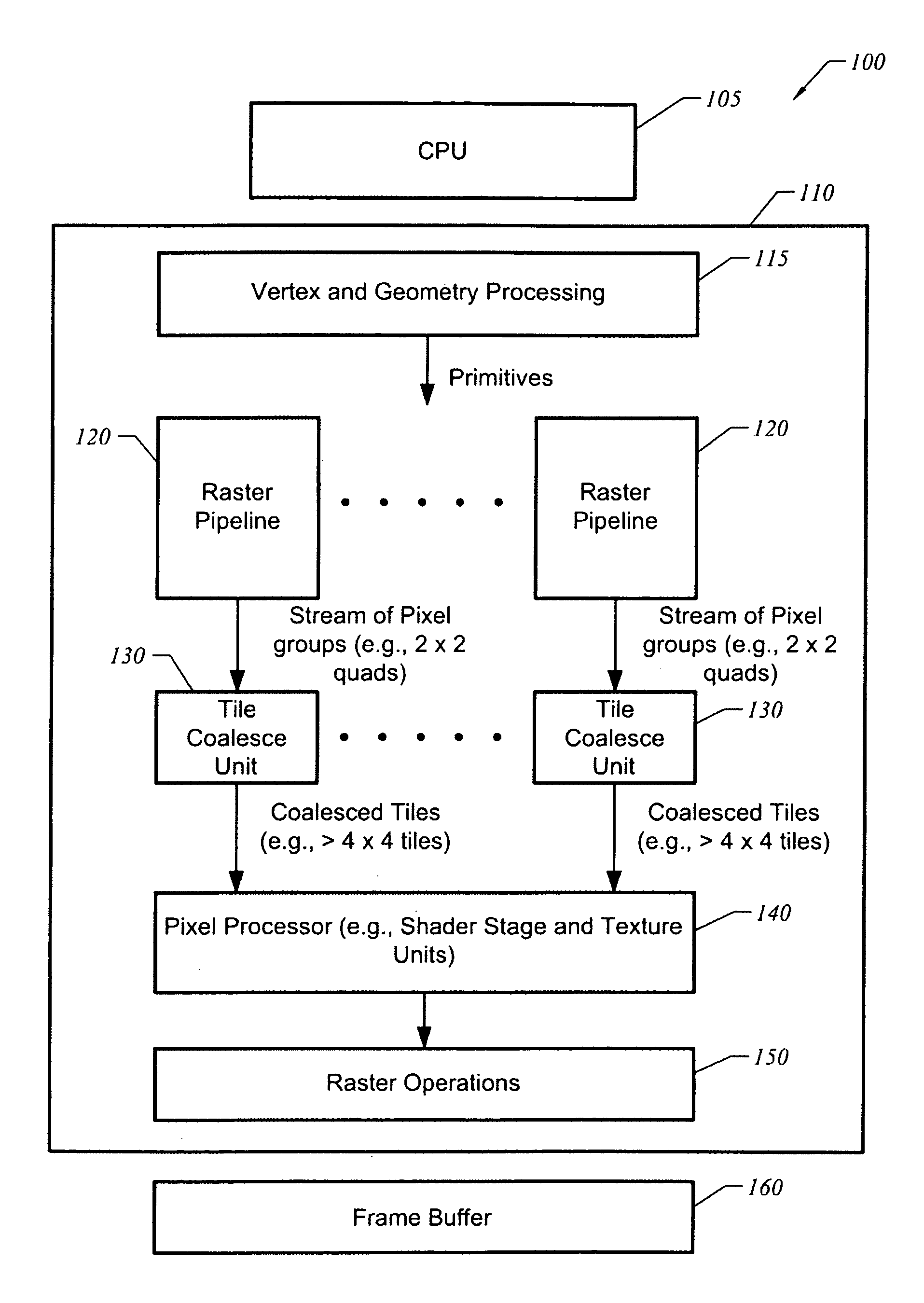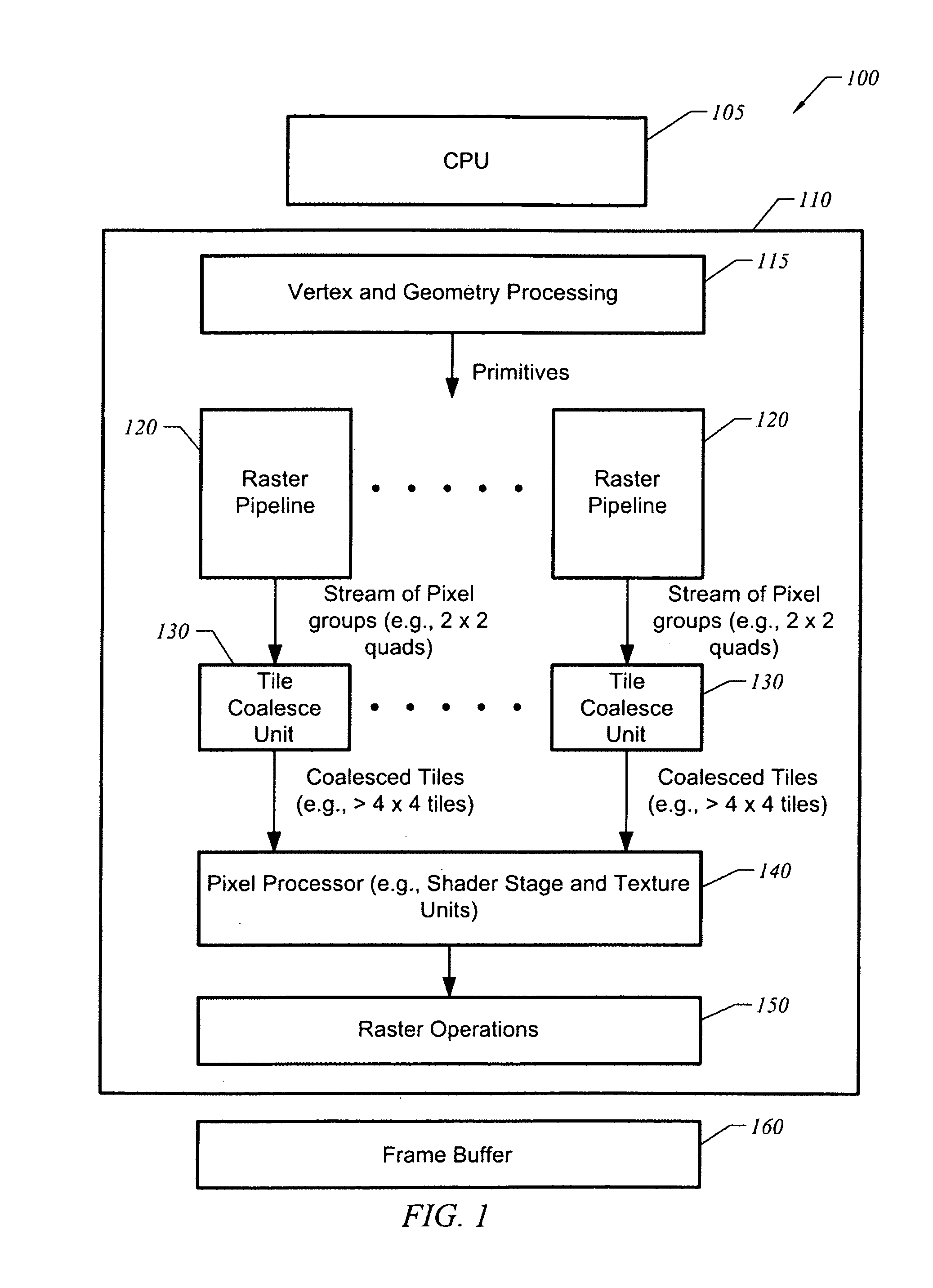Apparatus and method for raster tile coalescing
a technology of raster tile and coalescing method, applied in the field of raster tile coalescing method, can solve the problems of inefficient memory access operation, inability to organize memory accesses with a high degree of memory coherency, and the comparatively large amount of processing resources for pixel shading. to achieve the effect of improving the transaction coherency of downstream processing elements
- Summary
- Abstract
- Description
- Claims
- Application Information
AI Technical Summary
Benefits of technology
Problems solved by technology
Method used
Image
Examples
Embodiment Construction
[0015]FIG. 1 is a block diagram of a graphics system 100 in accordance with one embodiment of the present invention. A central processing unit (CPU) 105 generates graphics commands received by a graphics processing unit (GPU) 110. GPU 110 includes a graphics pipeline having at least one stage 115 to perform vertex and geometry processing to generate graphical primitives, such as triangles. The graphics pipeline includes at least one raster pipeline 120 to rasterize primitives. As illustrated in FIG. 1, in one embodiment there is a sequence of parallel raster pipelines to rasterize different sections of a screen space in parallel. Each raster pipeline outputs data as a stream of pixel groups of a pre-selected size, such as 2×2 quads of pixels covering four pixels. For example, each raster pipeline 120 outputs a first quad, a second quad, and so on for a frame. Note that the sequence of parallel raster pipelines may be dedicated to processing specific portions of a screen. Alternative...
PUM
 Login to View More
Login to View More Abstract
Description
Claims
Application Information
 Login to View More
Login to View More - R&D
- Intellectual Property
- Life Sciences
- Materials
- Tech Scout
- Unparalleled Data Quality
- Higher Quality Content
- 60% Fewer Hallucinations
Browse by: Latest US Patents, China's latest patents, Technical Efficacy Thesaurus, Application Domain, Technology Topic, Popular Technical Reports.
© 2025 PatSnap. All rights reserved.Legal|Privacy policy|Modern Slavery Act Transparency Statement|Sitemap|About US| Contact US: help@patsnap.com



